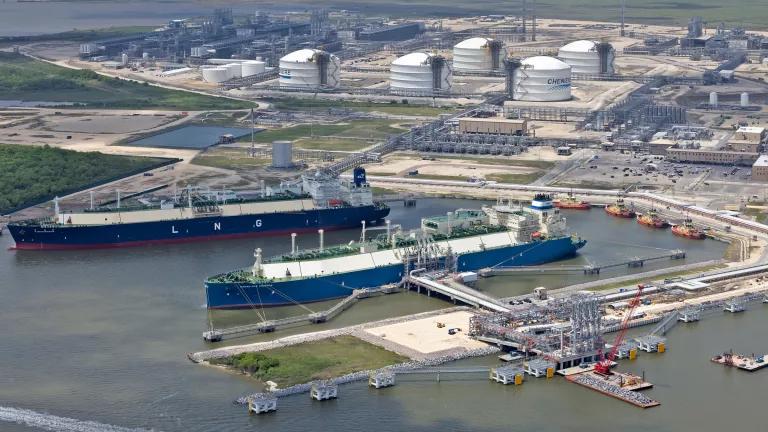Last week, the United Nations Environment Programme and the Partnership for Clean Fuels and Vehicles, which NRDC helped found, announced a major public health victory — leaded gasoline will be gone from the planet by 2013. It is virtually all gone now. This is a tremendous victory for children and families around the world — lead pollution was poisoning millions of kids each year. It's also the latest in a series of triumphs in which the world has successfully solved a difficult environmental problem, creating far-reaching benefits (in this case, to the tune of a million lives and trillions of dollars a year) that have vastly outweighed any short-term costs.
If the world can successfully remove lead from gasoline — just as we dramatically reduced acid rain, and banned ozone-layer-attacking CFCs — then we can also work together to solve another global problem: climate change.
We have seen, time and again, that the "impossible," the "impractical," or the "too expensive" can be achieved, at a fraction of the expected costs, and with profound and long-lasting benefits.
When NRDC helped found the Partnership for Clean Fuels and Vehicles in 2002, about half the nations in the world still used leaded gasoline. Although the dangers of lead were becoming increasingly clear, many nations had no plan in place to address the issue.
The partnership set for itself a series of goals, leading up to the ultimate achievement — the complete removal of lead from the global fuel supply.
Their work moved steadily from concept into reality. Working with NGOs, governments, international organizations, academia and industry, the partnership helped spur national leaders around the world into action. Partners in more than 100 countries worked to raise public awareness, provided policy and technical advice, and helped each nation develop guidelines and a timetable for lead removal. Within five years, nearly all of Africa and the entire western hemisphere were lead-free. By 2008, much of Asia followed. Today, according to fuel samples and a review of industry statistics, just 6 nations continue to use leaded gasoline. Even these holdouts, which include North Korea and Myanmar, are expected to be lead-free by 2013. In addition, Innospec, the only remaining company that manufactures the lead fuel additive, announced in its most recent annual report that it would stop sales of their lead additive by 2012. It's astounding, and humbling, to think that what started as an NRDC lawsuit in the 1970s ended up with global removal of leaded gasoline. But our work on CFCs followed much the same path. When scientists discovered that CFCs could weaken the ozone layer, which protects Earth from harmful ultraviolet rays, NRDC pursued federal and state bans, and helped jumpstart international cooperation to solve the problem.
Some said the problem was insurmountable. At a Congressional hearing on the CFC phaseout, a refrigeration industry representative testified: "We will see shutdowns of refrigeration equipment in supermarkets...We will see shutdowns of chiller machines, which cool our large office buildings, our hotels, and hospitals." Of course, we saw nothing of the sort. In the U.S., the phase-out happened five years faster than expected, and at just 30 percent of the predicted cost. NRDC worked with industry, governments and other NGOs to create an international agreement called the Montreal Protocol, which led to the phaseout of 95 percent of all ozone-depleting chemical from the planet. Today, industry has better-performing alternatives that opened up new markets, and the ozone layer is already healing. Similarly, when it became clear that sulfur dioxide and nitrous oxides from power plant emissions were causing acid rain, nations of the world moved both individually and together to legislate solutions — over industry objections that the science behind acid rain was "ambiguous." (Sound familiar?) In the U.S., complying with clean air regulations under the acid rain program cost 97 percent LESS than what the power industry claimed it would. We innovated our way to a solution for acid rain, and now, America dominates the market for power plant scrubber technology.
In the case of leaded gasoline, the oil and gas industry again moved to cast doubt on the science behind lead pollution, and warned of "an adverse effect on the nation's economy." The United States ended up saving $10 for every $1 spent on removing lead from gasoline, due to reduced health costs, savings on engine maintenance, and better fuel efficiency. We keep hearing the same old arguments as to why environmental problems are just too hard to tackle. Yet our track record of solving these problems is actually quite impressive. We have achieved tremendous successes in improving the health of people and the planet while creating unforeseen economic benefits. Our latest success in removing lead from gasoline should give us hope that no environmental problem is insurmountable. This is only the most recent victory in a string of big problems the world has solved together — and it won't be the last.



